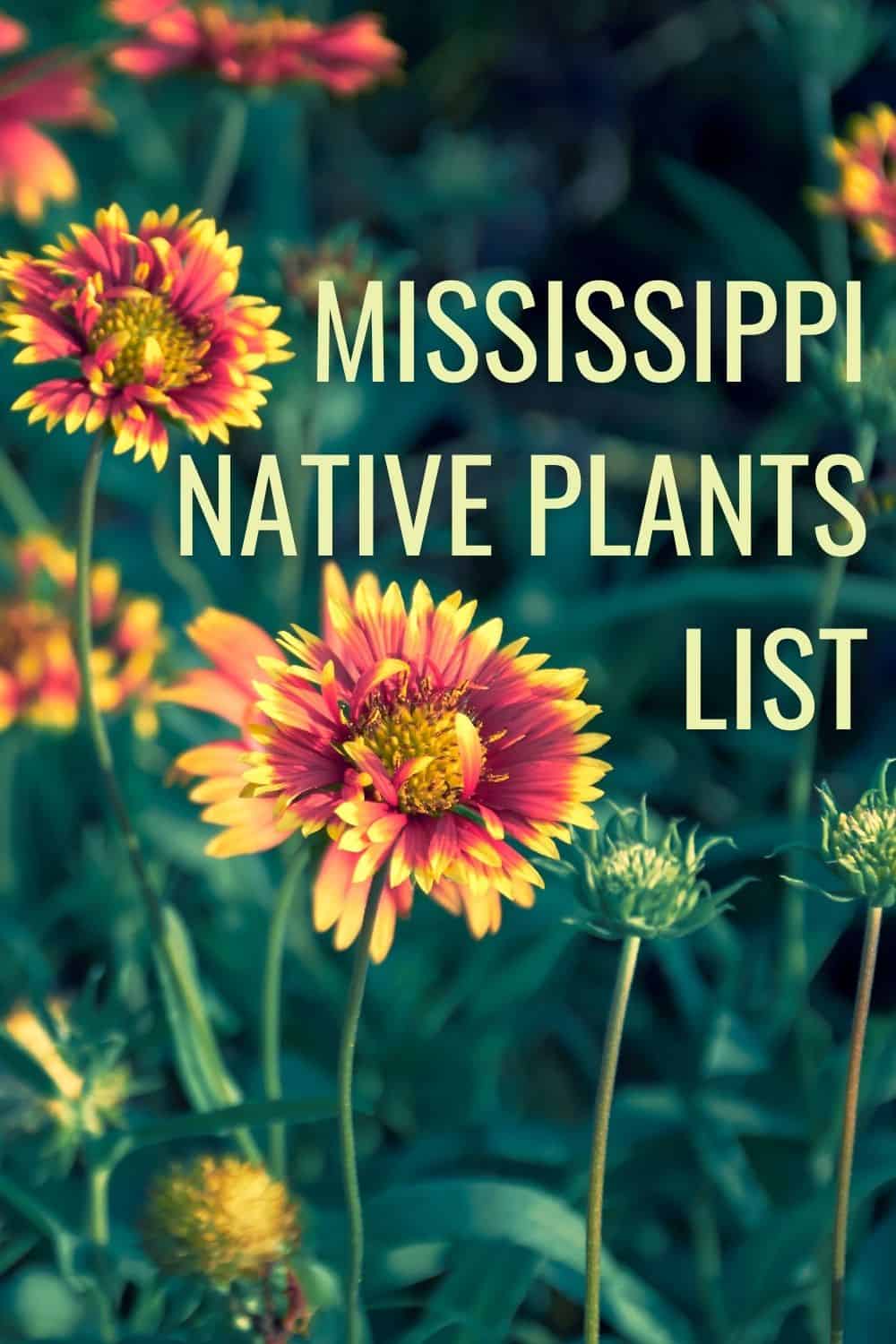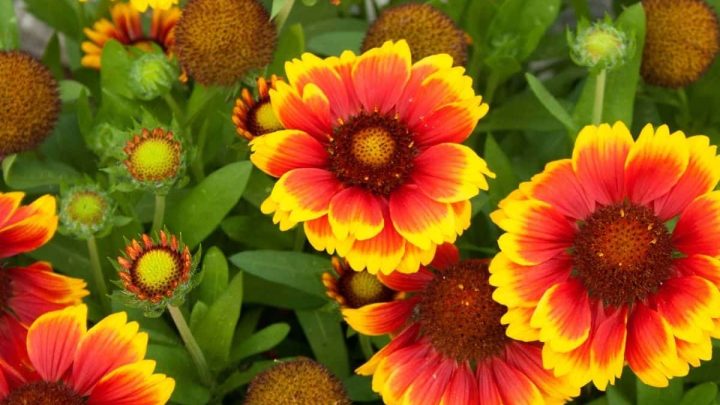Native plants will help you have easier gardening and more successful blooms. This is because native plants are already adapted to the climates and conditions in Mississippi. They don’t require fertilizers and they need fewer (if any) pesticides when compared to traditional lawns. They also help prevent soil erosion and don’t need to be watered as much as lawns.
With this Mississippi native plants list, you can create a wildlife habitat right in your own backyard (or front or side yard). This is great for new landscaping projects or anyone who is looking to carve out some garden space in their existing lawn.
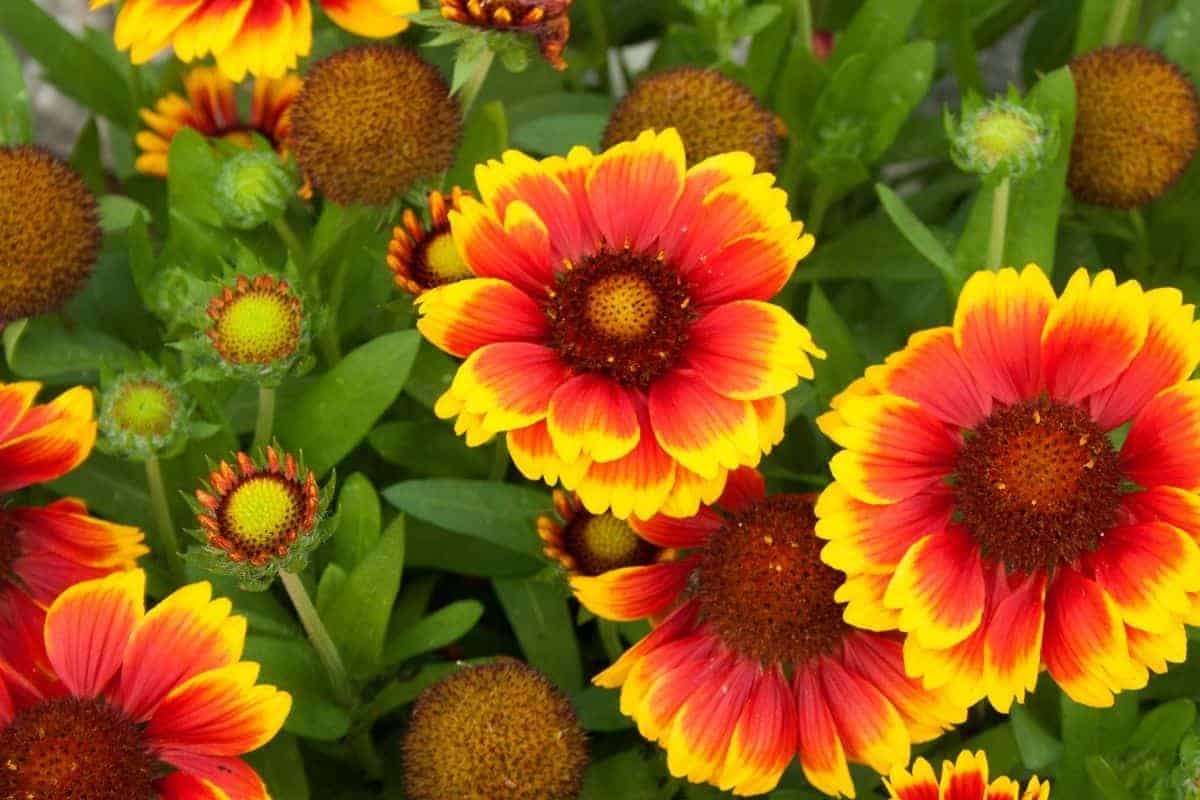
About Mississippi’s Climate
Before we dive into some great native plant suggestions, let’s take a look at what kind of climate we are dealing with in Mississippi. The Southern state is located in what is called the subtropical climate region. This area gets temperate winters, long and hot summers, and evenly distributed rainfall throughout the year.
However, Mississippi can also have droughts and floods throughout the year and the temperatures are hardly ever average. The climate can be very extreme in one direction or another. From May to September there can be more humidity and also violent thunderstorms. But summer brings extreme heat and sometimes drought.
The ground doesn’t freeze very often, and cold spells are usually short when they do come. There can be snow or sleet, but it’s not a lot of it. Hurricanes are possible in coastal parts of the state and tornadoes are also very common, especially in the spring.
Mississippi Native Plants List
While there are more than 2,700 plant species that are native to Mississippi, we can only tell you about a few today. Hopefully, this sparks your interest to do even more research on the best natives for your landscaping. Of the 2,700 plant species native to the state, 2,400 are flowering plants.
There are also 72 ferns or fern-allies. There are so many shrubs, trees, herbs, and wildflowers to choose from, there’s no reason to use non-native plants in your landscape.
1. Common yarrow (Achillea millefolium)
Common yarrow is often called just yarrow, Western yarrow, or milfoil. It’s a perennial herb that likes full sun to part shade and dry conditions. It will do best in a place that doesn’t have flooding when it rains and that has good draining soil. It has flat-topped clusters of small, white- and cream-colored flowers that grow on the very top of gray-green leafy stems.
2. Wild red columbine (Aquilegia canadensis)
Wild red columbine or Eastern columbine is a perennial herb with beautiful red flowers. It likes part shade to full shade and moist to dry soil conditions.
This wildflower is in the buttercup family, which you will be able to tell from the shape of the flowers. It can grow up to 2 feet tall and the blooms happen at the tops of the stems but then droop down in a bell-like fashion. The flowers are about two inches long, on average. While they are usually red with yellow, they can sometimes have pink coloration, too.
3. Red milkweed (Asclepias lanceolata)
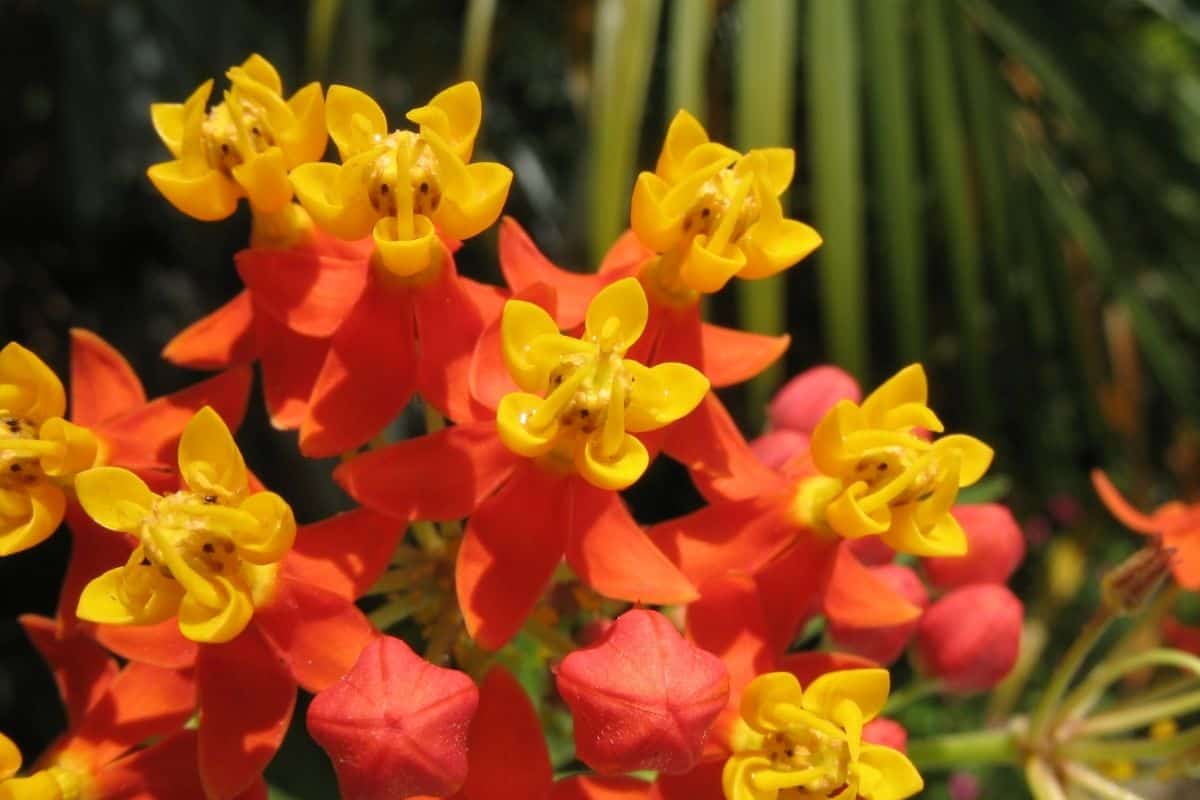
This is another perennial herb with beautiful flowers. It’s sometimes called few flower milkweed, and it likes full sun and wet soil. You will sometimes see this milkweed sprouting up from wet ditches, or beside bodies of water and streams.
It is most commonly found in coastal plains areas of Mississippi. It can grow from 3-5 feet tall and has long lance-shaped leaves. The bright orange-red flowers that grow at the ends of the stems will really brighten up your landscape. The flowers bloom from May to August.
4. Orange milkweed (Asclepias tuberosa)
Also called butterfly weed or pleurisy root, this is another type of milkweed that is native to Mississippi. It’s also a perennial herb and it likes sun to part shade and moist to dry soil conditions.
Butterflies love this milkweed, which is where it gets one of its common nicknames. It’s bushy and has large, flat-topped clusters of flowers at the tops. It grows about 1 ½ to 2 feet in size and the flowers are about 1 ½ to 2 ¼ inches long. This species of milkweed does not have a milky sap.
5. Crossvine (Bignonia capreolata)
Crossvine is a woody, vining perennial with stunning trumpet-shaped flowers. It likes full sun to part shade and moist to dry soil. They can grow as much as 50ft long when conditions are right, with showy orange-red and yellow flowers.
Sometimes you can see the flowers up high in a tree as they use tendrils to climb. Crossvine has waxy leaves and the blooms appear from March to May. This is a great ornamental choice for your landscape.
6. American beautyberry (Callicarpa americana)
This is a perennial shrub that likes part-shade and moist soil. It is also called French mulberry. It can grow from 3-5 feet tall and just as wide, although sometimes it is even taller. It has long, arching branches and the foliage is yellow-green in fall and winter. The clusters of glossy, purple berries are where it gets its name, and these are very beneficial to local birds.
7. Trumpet creeper (Campsis radicans)
Trumper creeper is also known as cow vine, trumpet vine, or common trumpet creeper. The name trumpet comes from the shape the flowers take when they bloom. It’s a vining perennial that loves full sun and can do well in moist to dry soils.
The trumpet creeper can be invasive in many areas so do some research before you plant, but when used carefully and supervised for aggressiveness, they can be beneficial for hummingbirds and local pollinators.
8. White-mouth dayflower (Commelina erecta)
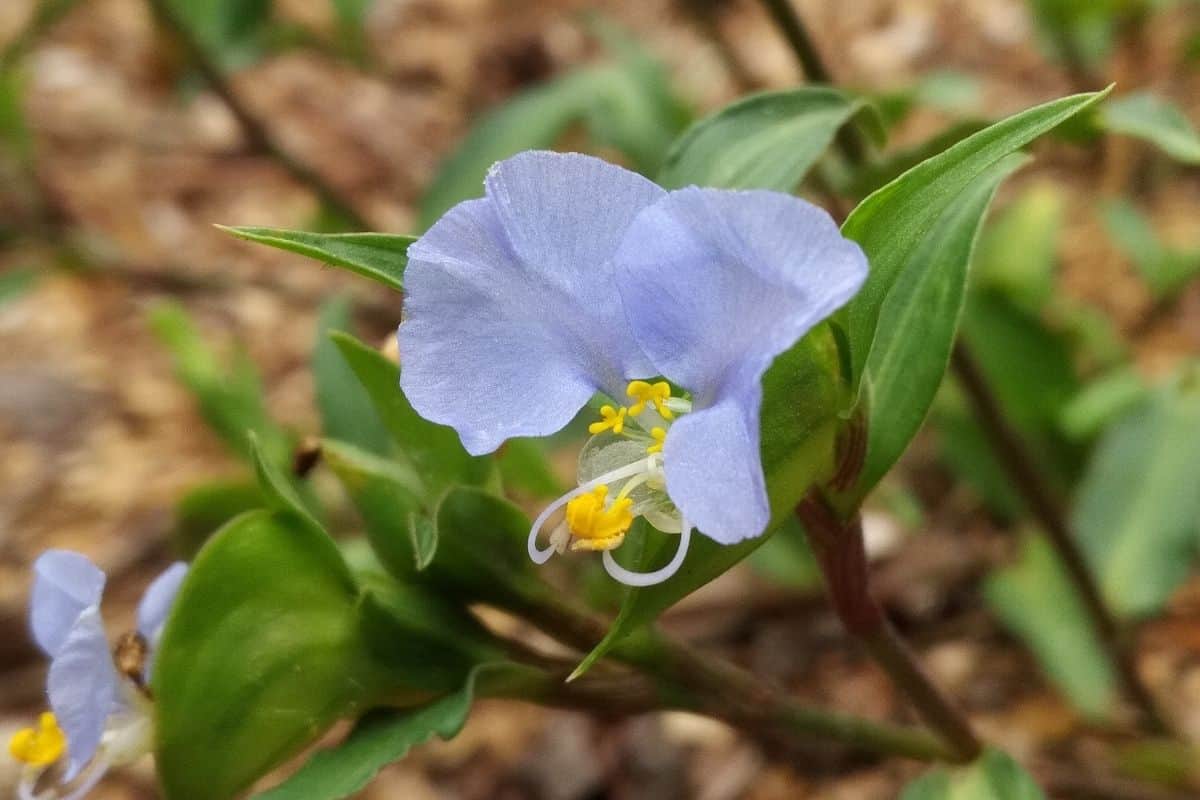
This day flower is also called widow’s tears. It’s a perennial shrub that likes part-shade and dry soil. This stunning blue flower will make any garden or landscape pop and it is a long blooming from May to October.
This flower will only grow upright if it is supported by another plant so consider that when you plan and plant your garden. Usually, it will lie on the ground and grow up to 3 feet long. The flowers are about 1 inch across, on average.
9. Sand coreopsis (Coreopsis lanceolata)
Sand coreopsis is also known as lanceleaf tickseed or lanceleaf coreopsis. It is a perennial herb with beautiful yellow flowers that likes full sun, part shade, or full shade. It needs dry soil to thrive.
It is distinguishable from other coreopsis only by the lack of lobes on its basal leaves. The nectar and pollen from these beautiful flowers will attract insects, bees, wasps, butterflies, skippers, beetles, and day-flying moths.
Deer, rabbits, and groundhogs may feed on the leaves. Because the plant has a tendency to become aggressive in growth, this is usually fine to help control spread.
10. Plains coreopsis (Coreopsis tinctoria)
Similar to sand coreopsis, this perennial herb likes sun or part shade and moist soil. It has yellow flowers with a red center. It is sometimes called golden tickseed or golden wave. The flowers on this one are much showier than the sand coreopsis. It’s also in the Aster family and can grow from 1-2 feet.
The flowers are small but abundant, and the flower heads appear on the top of the long stalks with multi-branching stems. They bloom from April to June. They are great for ornamentals in the landscape.
11. Eastern redbud (Cercis canadensis)
Eastern redbud is a perennial tree that likes full to part shade and moist soil. It blooms in pretty pink flowers. This tree can grow from 15-30 feet in maturity and has a wide, umbrella-like crown. It is absolutely stunning when the pink blooms come in.
Eastern redbud should be planted in moist, well-drained soil and have access to full sun or just partial shade. If planting new, plan for the full growth it will eventually reach. It’s very pH adaptable and will do best in areas of good air circulation so it doesn’t fall prey to fungus.
12. Cigar tree (Catalpa bignonioides)
Cigar tree is also called Southern catalpa and is a perennial tree that prefers part shade and wet soil. This is a medium-sized tree with beautiful, delicate buds. It blooms in summer and the flowers are purple to lavender colored or white, and smaller than 6 inches, on average.
It requires good drainage for the soil, or it might fall prey to moisture-related diseases. It can grow up to 20 feet high and 20 feet wide.
13. Flowering dogwood (Cornus florida)
This dogwood is sometimes also called Virginia dogwood because they are very common there. It’s another perennial tree with beautiful blooms. It likes full to part shade and moist to dry soil.
Dogwood has a shorter trunk but a widespread branching system that fills out nicely with lots of blooms. It can grow from 15 to 25 feet tall. It will typically bloom from April to May. It attracts birds and butterflies.
14. Firewheel (Gaillardia pulchella)
Firewheel is also called Indian blanket. This is an annual herb with striking blooms of red and yellow. It likes full sun to part shade and dry soil. It grows about 1-3 feet tall and has a hairy stem with many branches. It becomes wood at the base.
The showy flowers are red, yellow, and brown and bloom from May to August. In rainy seasons, it might flower longer.
15. Swamp maple (Acer rubrum var. drummondii)
Swamp maple is a perennial tree that likes part shade and wet to moist soil conditions. This is why it can do very well in Mississippi lawns and landscapes since the state does get a lot of moisture. This tree is known in the state for its beautiful red foliage in the fall.
16. Box Elder (Acer negundo)
This perennial tree is also called ash-leaf maple and makes a great choice for a Mississippi landscape. It likes full sun and moist conditions. In full maturity, it can grow from 35-50 feet tall. It has a short trunk, wide-spreading branches, and light green foliage. Can provide shade to parts of your landscape.
If you’d like to learn about more Mississippi native plant life besides what we have on our list today, you can take a look at the Gardenia plant indexes for Mississippi.
Mississippi native plants list FAQ
Here are some questions people often ask about plants in the Magnolia State.
What plant is Mississippi known for?
Mississippi is famous for the magnolia tree, a deciduous evergreen with beautiful blooms.
Where can I buy native plants in Mississippi?
You can always check with a local nursery that specializes in native plants, or look at the directory at Garden Experiments for sources of great native plants in your area.
Where can I learn more about native plants in Mississippi?
If our post got you curious and you want to learn more, we recommend you check out the Mississippi Native Plant Society. Here you will find qualified biologists, horticulturalists, and conservationists who love native plants as much as we do.
